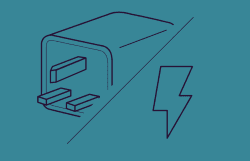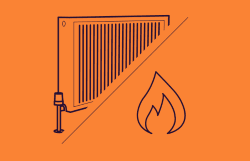When it comes to reducing energy consumption and improving energy efficiency, many opportunities to achieve these goals lay in lighting. The quality of lighting in a business can have an impact on how well employees can concentrate. At the same time, if approached in a wrong way, lighting can be driving up monthly energy bills of a company. In this article we discuss energy efficiency opportunities available associated with introducing LED lighting improvements.
Modelling software for lighting upgrades
Lighting designs are created through the use of various software systems which can serve as a tool allowing to improve the lighting design of a building or only a certain area within it. Carefully considering the lightning design is important as excess illumination can lead to wasting energy and higher energy costs. The additional costs come not only from more energy consumption but also more LED fittings and wiring (which are not essential).
Ineffective lighting design can also make the building lack contrast or can create glare in the office, making it difficult and unenjoyable for employees to work. Such flaws also mean higher energy demand and trigger more expenses.
To come up with the perfect lighting design for your office premises, you need to think about how the space you want to illuminate is used and how you want the lights there to work. Also, instead of just relying on the software, you should think about how the lights that are currently there perform, how much natural light from the sun comes in during the day, and whether there is a lot of reflectance in the room.
By creating a lighting design that takes into consideration the tasks undertaken in certain rooms, you will not only improve energy efficiency but you will also create a better ambience.
Engaging with statekolders
In buildings with multi-use areas where flexibility when it comes to lighting is needed to achieve a certain illuminance for a wide range of activities, engaging with stakeholders can be beneficial. It allows to understand how lighting requirements would be met previously. And, engaging with building users helps achieve a reduction in energy, enhanced responsibility for the area, and better energy-saving practices. Discussion with stakeholders can also offer insights into the lighting design of the building and how it has been changing over the years. Sometimes you might realise that certain things such as light fittings that were once installed are no longer needed or need to be replaced by more modern ones. Finally, having consultation with stakeholders and staff can be a part of the energy monitoring regime that allows to track progress in improving the building’s energy efficiency.
Emergency lighting
For savings and good energy efficiency emergency lights should be separated from luminaires, Instead, DOT LED emergency non-maintained downlights should be installed. They consume less energy and are powered by easily-accessible AA batteries rather than size D batteries required otherwise. This allows to reduce the footprint of the battery pack. And, such fittings are smaller, simpler, and less expensive to purchase and install. They can also be installed in both plasterboard ceilings and suspended ceiling types so they can be effective in various types of buildings.
Doing an audit
Conducting an energy audit of the lighting schemes within the business can help identify opportunities for improvements, triggering big savings. Thank to an energy audit you can also better understand the types of lighting systems you have in the building and you can find out how much energy ithey consume. And, if you want to apply for loan finance schemes, you will need to provide this information. If your organisation is large, an energy audit can take a while and can be complex but the results will cover numerous lighting installations within your company.
By fully understanding the type of lighting, wiring, and various components, you can be sure that the installation will deliver the best benefits in regards to saving money and reducing your energy consumption. Overall, conducting an energy audit is a straightforward way to start saving money.
Controls to lighting systems
Staff behaviour can have a big impact on the energy consumption in your building. You should try to use education and persuasion to make them use less energy and join the efforts to improve the energy efficiency of the building. A good way to do that is to, for example, use stickers and posters around light switches. These stickers and posters can remind them to turn the lights off even if they are leaving the room only for a short period of time. You can also organise sessions during which an energy expert tells them more about tips to save energy at a workplace and about what the benefits of that are.
A the same time, while encouraging people to change the way they consume energy and turn the lights off every time they leave a room is a good starting point, it should not be your only strategy to reduce the energy consumption in your building. This is because people are often set in their ways and changing their habits is a lengthy process and there will always be someone who will not follow this advice. To make sure that energy is not being wasted, you should install controls to lighting systems. By installing timers you can be sure that the lights will turn off at a certain point rather than staying on overnight when there is no one in the building. Many perceive such controls to be an addition to a building rather than a necessary measure but if improving energy efficiency is your priority, you should consider installing them. As well as timers, you can get controls that allow to adjust sensitivity, delay the times when the lights turn on, or dim lights in certain areas.
Get professional help
Many business owners are tempted to do everything themselves as they think they know their company best. While this of course is true, there are many professionals who specialise in helping businesses like yours identify saving opportunities and improve their energy efficiency. You do not have to be an energy expert yourself to deliver savings. By getting advice from an energy manager, you xan maximise efficiencies of the lighting systems in your building and you can find out whether you are on the right track in achieving your energy efficiency goals. An energy manager can help you develop a detailed roadmap to making your lighting system more effective. You should also develop working relationships with electricians, wholesalers, and project managers who might offer invaluable insight in many other relevant areas. Their knowledge and experience combined can prove highly useful and by working with all of them rather than acting independently you can implement the most energy efficient solutions.




